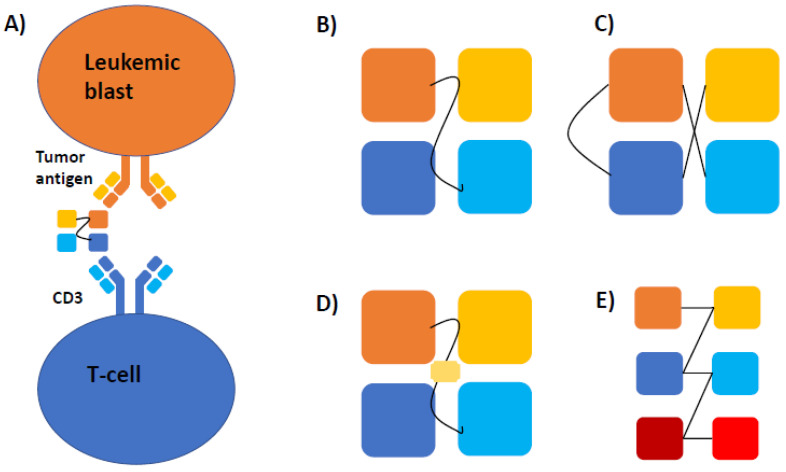Figure 1.
(A) Mechanism of action and basic construct of various bispecific antibodies. Bispecific antibodies consist of a single heavy and light chain of the variable region of a tumor-associated antigen (e.g., CD33 or CD123; shown as yellow and orange squares) and CD3 (illustrated as light and dark blue squares) leading to the formation of a cytolytic synapse between T-cells and leukemic blasts. (B) In their basic construct, these bispecific T-engaging antibodies (BiTEs) are connected by a linker molecule, which defines the flexibility of the construct and antigen-binding kinetics in conjunction with the specific antigens used. (C) Dual-affinity re-targeting molecules (DARTs) have a similar basic structure but include a disulfide linker for additional stability. (D) Bispecific (BiKEs) and (E) trispecific killer cell engagers (TriKEs) consist of either two (BiKE) or three (TriKE) variable antigen regions and activate natural killer cells either by binding to IL16 or containing an IL15 linker (yellow rectangle in (D)).

